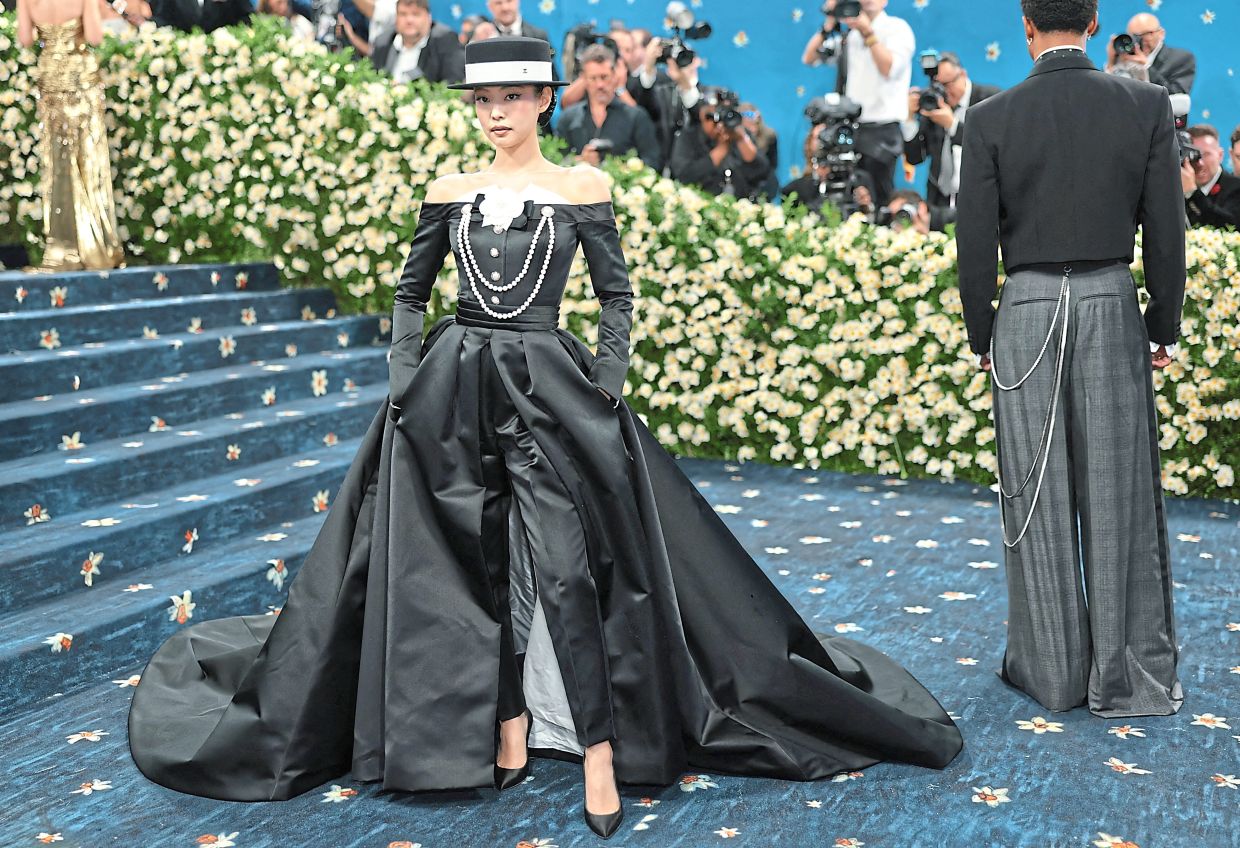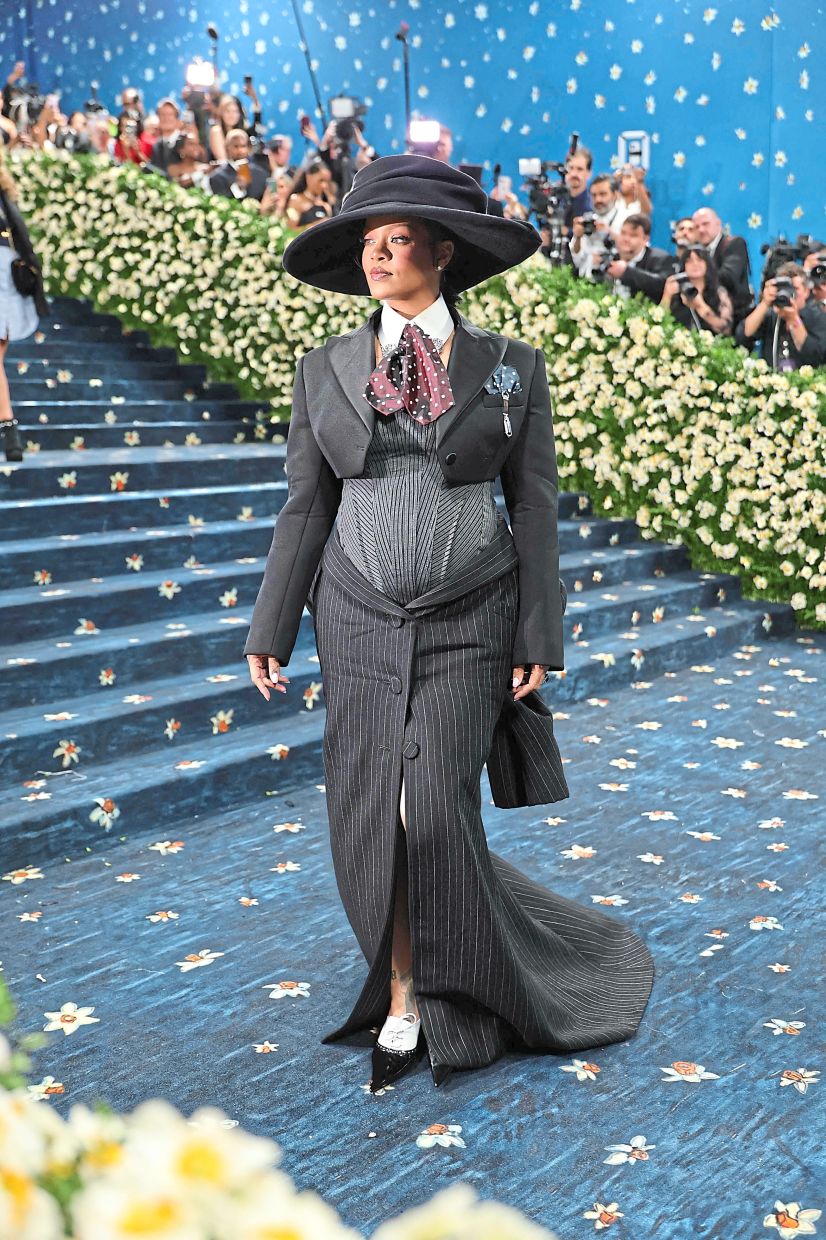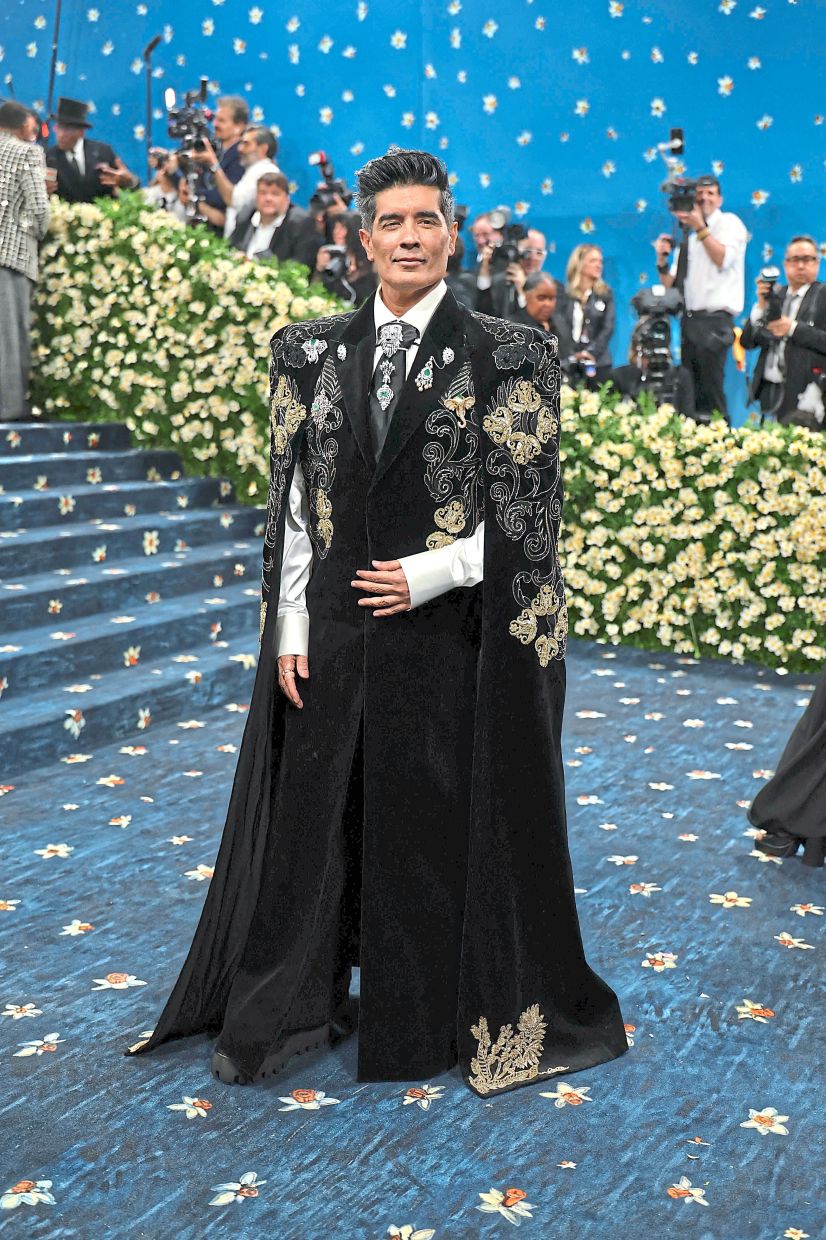Lauryn Hill's outfit features a standing collar that draped down to a train. Photo: Reuters
The Met Gala, dubbed "fashion's biggest night out", has always been about making a statement.
This year's event however took a different turn. It placed menswear front and centre with a theme focusing on classic tailoring.
As always, the dress code is inspired by the spring exhibition at the Costume Institute of the Metropolitan Museum of Art in New York City.
"Superfine: Tailoring Black Style” is the first to focus exclusively on Black designers, and the first in more than 20 years to have a menswear theme.
It looks at the evolution of Black style in the US over the centuries through the lens of dandyism (in the context of men dressing up as a form of self-expression, identity and rebellion).
In terms of shaping the menswear narrative, the 2025 Met Gala can also help spotlight voices that have long been left out of the mainstream fashion conversation.
The fashion industry, after all, is usually perceived as a woman's world.
It has historically focused on women's clothing, trends and beauty standards – both in media coverage and market demand, despite being shaped behind the scenes by many male designers and executives.
A changing perception
"Menswear started off with really formal suits. Now, guys are comfortable enough to adopt all kinds of looks: oversized clothes, streetwear and more," commented Malaysian designer Hatta Dolmat.
"It’s currently more about showing your personality than following old rules."
This is evident on the red carpet, where celebrities dressed in their best interpretations of the dress code, "Tailored For You".
Guests were invited to be as creative as possible within the framework of classic tailoring (an early suggestion called for everything from "Savile Row to a track suit").
From subtle reinventions of the classic tux to bold experiments with silhouette and fabric, the looks offered a fresh take on what menswear can be.
"Menswear can definitely be iconic. Some collections we have seen on runways really changed how people dressed," Hatta noted.
"Like Hedi Slimane’s skinny suits at Dior Homme in the 2000s, or Virgil Abloh’s Louis Vuitton debut, which brought streetwear into high fashion. Thom Browne also made suits fun and different with his cropped designs."
Fellow Malaysian designer Vincent Siow said that fashion in general is never a constant.
"Evolution is the process of change, referencing what was and adapting to the times," he shared, when asked about whether menswear has transformed to fit modern needs.
Read more: Met Gala 2025: Henry Golding shines in gold alongside other red carpet stars
A spotlight on designers
"Superfine: Tailoring Black Style” highlights up-and-coming fashion designers. This is unlike past shows that focused on the work of famous names like Karl Lagerfeld or Charles James.
"It's super exciting to showcase the designs of these younger and emerging designers,” co-curator Monica L Miller was quoted as saying by AP, prior to the opening.
According to her, the range is "phenomenal”.
"And to see the way they've been thinking about Black representation across time and across geography,” she added.
Miller is a college professor. Her book, Slaves To Fashion: Black Dandyism And The Styling Of Black Diasporic Identity, is a foundation for the show.
That said, there are also menswear veterans that have revolutionised the way fashion is consumed by dandies.
Hatta said that in the industry itself, several comes to mind when thinking about brave designers that pushed boundaries for male dressing.
"Virgil Abloh (who died in 2021) will always be remembered for how he transformed streetwear into luxury. He opened a new door for more diversity in looks and styles too," Hatta mused.
"Then, there is Yohji Yamamoto with his oversized looks – he has a unique and artistic way of fabric manipulation. Rick Owens also stands out for having a dark, cool and edgy style."
The stars who stood out
According to Malaysian stylist Mughni Che Din, this year's theme is probably the most conceptually rich in memory.
He however said that despite a theme rooted in tailoring and traditionally masculine codes, it was the women who truly understood – and elevated – the assignment.
His top picks for best-dressed include Cynthia Erivo in Givenchy by Sarah Burton, Jennie (of Blackpink) in vintage Chanel, and Lauryn Hill in butter-yellow suiting.
He added that numerous stars dressed fabulously to fit the dress code.
"Rihanna, in a custom Marc Jacobs cape-suit hybrid, not only embodied the theme with high drama – she also revealed her baby bump, proving once again that no one commands a red carpet quite like she does, "Mughni commented.
"There is also Zendaya who turned heads in an all-white Louis Vuitton pantsuit inspired by Bianca Jagger – a modern twist on timeless power dressing."
For the the guys, he picked Lewis Hamilton, in a custom Grace Wales Bonner suit, as among the standouts.
He said that Henry Golding successfully turned heads in a jewel-toned Ozwald Boateng design, which balanced boldness with tradition.
"Colman Domingo delivered theatrical reverence in Valentino, draped in a cape that honoured the late Andre Leon Talley," Mughni pointed out.
"Bad Bunny brought surrealist swagger in Prada, Chance the Rapper kept things cool and refined, and Jeff Goldblum reminded us that true style is lived-in and effortless."
He also gave examples of how Keith Powers and Christian Latchman played around with youthful, futuristic takes on style — proving that tailoring, when done right, becomes a declaration of identity.
Read more: What is dandyism? This bold fashion movement has long redefined elegance
Decades of sartorial style
This year’s Met Gala showcased how menswear (even when worn by women) can hold its own under the spotlight with daring and imaginative fashion choices.
From sculptural silhouettes to opulent fabrics, it redefined red carpet style, proving that modern looks regardless of gender can be both expressive and iconic.
Siow said that each different decade has a different spin on how menswear looks and feels like.
"For me the 1920s and 1930s are really the golden age of menswear," he added.
"Relaxed yet elegant, looks from those times are still relevant today. They follow the principles of broad shoulders and high-waisted trousers creating a silhouette that is strong for men, yet proportionally pleasing."
He stressed that even before this year, there had already been a strong resurgence of interest in tailoring as a foundation for bold menswear expression.
However, the Met Gala's theme will definitely spark a conversation focused on tailoring.
"Men will start thinking thinking intentionally about how they want their wardrobes to look. I’m excited to see how it leads to an uptick in the menswear market!" Siow concluded.










